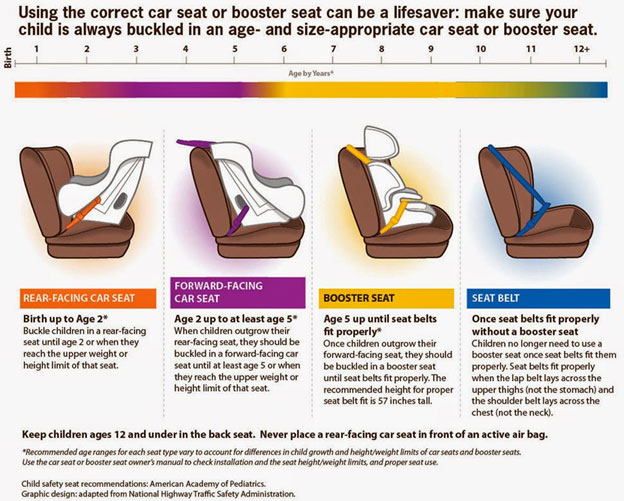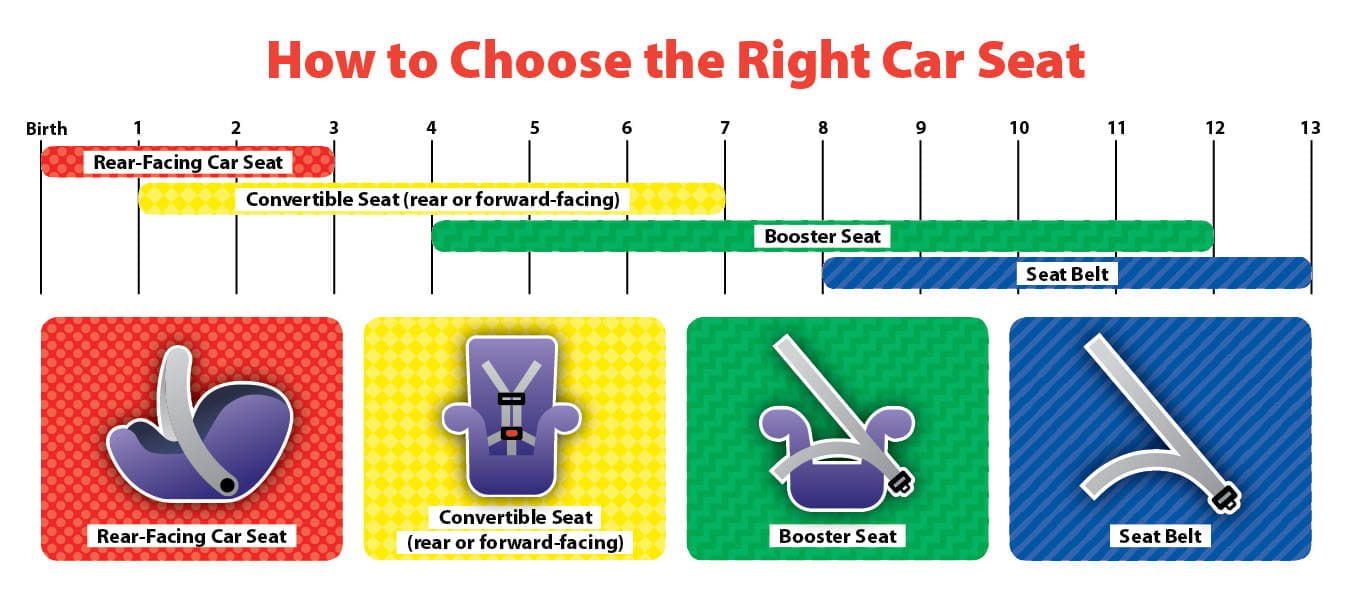Car seat safety is a crucial concern for any parent or caregiver of children who travel in cars. When it comes to choosing a car seat, there are a few things to keep in mind. First and foremost, it's important to select a seat that is appropriate for your child's age, height, and weight. Additionally, you may want to consider other factors such as the type of car you drive, the size of your family, and your budget.
Infant Car Seats
Infant car seats are designed for babies who weigh between 4 and 35 pounds and are less than 32 inches tall. These seats are rear-facing only, which means your baby will face the rear of the car while riding. According to the American Academy of Pediatrics (AAP), infants should ride in a rear-facing car seat as long as possible, up to the age of two or until they reach the highest weight or height allowed by the car seat manufacturer.
Convertible Car Seats

A convertible car seat is a car seat that can be used in both rear-facing and forward-facing modes. These seats are suitable for babies who have outgrown their infant car seat or who weigh between 5 and 40 pounds in the rear-facing mode and 20 to 65 pounds in the forward-facing mode. The AAP recommends that children continue to ride rear-facing in a convertible car seat until they reach the highest weight or height allowed by the car seat manufacturer, usually between 2 and 4 years old.
Booster Seats

Booster seats are designed for children who have outgrown their convertible car seat but are still too small to use a seat belt safely. Booster seats raise your child up so that the seat belt fits properly over their lap and shoulder. The AAP recommends that children use a booster seat until they are at least 4 feet 9 inches tall and are between 8 and 12 years old.
Double-Duty Booster Seats

Double-duty booster seats are a combination of a booster seat and a convertible car seat. They can be used as a forward-facing car seat with a harness for younger children, then be used as a belt-positioning booster seat when your child outgrows the harness. The AAP recommends that children continue to use a booster seat until they are 4 feet 9 inches tall and are between 8 and 12 years old.
Car Seat Installation

Whichever type of car seat you choose, it's important to make sure it is installed correctly in your vehicle. The National Highway Traffic Safety Administration (NHTSA) estimates that up to 59% of car seats are installed incorrectly, which can compromise their safety. To ensure proper installation, carefully read the car seat manual and your vehicle owner's manual. Additionally, you may want to visit a Certified Child Passenger Safety Technician who can help you install your car seat correctly and teach you how to use it properly.
California Car Seat Law

If you live in California, it's important to be aware of the state's car seat laws. According to the California Highway Patrol, children under 2 years old must ride in a rear-facing car seat unless they weigh 40 or more pounds or are 40 or more inches tall. Children who are at least 2 years old may ride in a forward-facing car seat with a harness or in a booster seat, depending on their height and weight. Children who are at least 8 years old or 4 feet 9 inches tall may use a seat belt without a booster seat.
Conclusion
Choosing the right car seat for your child is an important decision that can have a lasting impact on their safety. By following the guidelines above, you can ensure that your child is properly protected while traveling in your vehicle. Remember to always read the car seat manual and your vehicle owner's manual, and to have your car seat inspected by a Certified Child Passenger Safety Technician to ensure it is properly installed. With the right car seat and proper installation, you can have peace of mind knowing that your child is safe on the road.
If you are looking for Car Seat Guidelines | Central Ohio Primary Care you've came to the right web. We have 8 Images about Car Seat Guidelines | Central Ohio Primary Care like Pin on Car Seat Tips, Choosing a Car Seat | Alaska Injury Prevention Center | Preventing and also Choosing a Car Seat | Alaska Injury Prevention Center | Preventing. Here you go:
Car Seat Guidelines | Central Ohio Primary Care
 www.copcp.com
www.copcp.com MSP - Child Passenger Safety
 www.michigan.gov
www.michigan.gov safety msp
This Is The PERFECT Chart To Car Seat Safety!!!! | Carseat Safety
 www.pinterest.com
www.pinterest.com seat car safety chart child guidelines booster age ages guide choose board safe rear passenger kids
California Car Seat Law & Car Seat Stages | Car Seats, Child Passenger
 www.pinterest.com
www.pinterest.com seat car california law child safety passenger seats weight height stages kids choose board
Pin On Car Seat Tips
 www.pinterest.com
www.pinterest.com seat car requirements seats cheat weight sheet age child nationwide infographic booster safety facing children kids carseats baby rear limits
Pin By Heather Anne On Baby | Carseat Safety, Car Seats, Car Seat
 www.pinterest.com
www.pinterest.com laws infant carseat booster whatmomslove libbie mata
Cdc Car Seat Guidelines : Arizona Car Seat Laws 2018 Rear Facing
 bungua.blogspot.com
bungua.blogspot.com laws cdc nxtbook
Choosing A Car Seat | Alaska Injury Prevention Center | Preventing
car seat seats booster alaska types recommendations safety child choosing recommendation steps when different injury prevention center learning passenger four
Car seat guidelines. Laws cdc nxtbook. Seat car requirements seats cheat weight sheet age child nationwide infographic booster safety facing children kids carseats baby rear limits
Post a Comment
Post a Comment